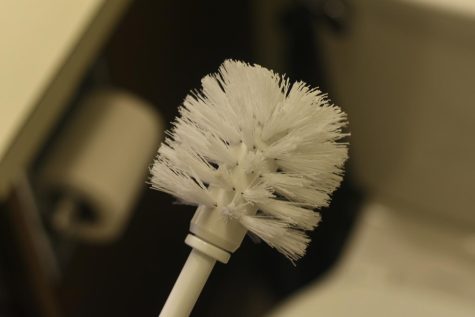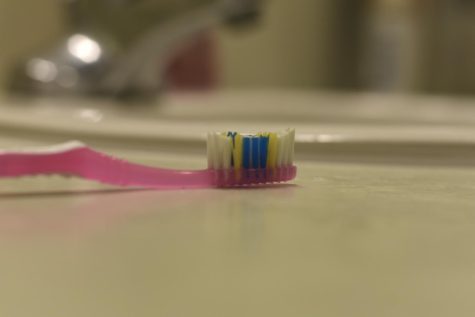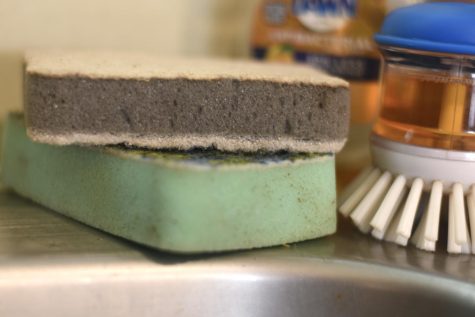When to throw out your toilet brush: A practical guide for students living in their first apartments
September 20, 2022
Editor’s Note: This story was updated at 1:29 p.m. on October 21, 2022, to include a podcast created by Sports Editor Kate Walkup that directly relates to this article.
The life of a toilet brush isn’t one I’d wish on many. While its sole purpose may seem mundane, its effectiveness usually draws a sizable sigh of relief from its user. But just like anything else, household products like a toilet brush, toothbrush, loofah, and dish sponge have an expiration date. So when is it time to throw it out?

A quick Google search will give you a very strict response that your toilet brush should be replaced every six months. This seems like a pretty radical turn around time for a toilet brush that, realistically, even hypochondriacs don’t follow.
Toilet brushes aren’t typically used everyday (I send my apologies to those who stray outside of this assumption), so it’s understandable that we neglect their timeline. However, it’s about time we start following a more rigid retirement regimen–especially when you take into account what’s left behind on the brush and in its holder after each use.
A toothbrush, while used within a cleaner entity should also be replaced about every 3-4 months. Since that’s hard to keep track of, replacing your brush when the bristles are worn is usually a good rule of thumb to follow.
An article in the Women’s Health magazine suggests that a toothbrush should be discarded when it’s dropped, bumps bristles with another brush, or if you’ve been traveling.
”You should always throw out your toothbrush if it hits the dorm bathroom floor,” exclaimed second year Linfield dorm-liver Sidra Griffin.
While these tips seem reasonable enough, there’s still the question of whether or not you should replace your toothbrush every time you recover from a cold or illness. Science says it’s not necessary.
The American Dental Association (ADA) concludes that, “[w]hile toothbrushes have been shown to harbor bacteria, there is no evidence that these bacteria cause adverse health effects.” However, there are sanitizing methods out there to help preserve your toothbrush’s longevity.

Another common household item that should have a respected expiration date is the shower loofah. For starters, you should just stop using one in general. Similar to the bad rap that baths are just a soak in your own filth, loofahs share a similar reprimand. While used similarly to a washcloth, loofahs don’t tend to leave the shower vicinity— making their state of incessant dampness the perfect place for mold and bacteria to grow.
“I’m sure that [loofahs] are perfect little petri dishes for all that fun stuff to grow,” said occasional loofah user and Linfield senior, McCall Bennion. “If I think about it too much it freaks me out a little bit, but that’s why it’s probably good to change it out more than I do. I should probably change mine out soon, this is a good reminder.”
Lastly, the everyday kitchen sponge also requires a timely switch out. Ultimately, your sponge should look a little gritty after each use as that means your dishes or counter tops are receiving a proper scrub down. But as previously discussed, you need to know when to say goodbye.

According to Martha Stewart’s website, sponges should be thrown out every two weeks, if not sooner. The most important things to factor in are odor and color. If you’re washing the sponge itself and squeezing it out after each use, this could increase your sponge’s lifetime.
Essentially, if your hands smell bad after using your sponge and the bristles on your toilet brush or toothbrush are worn… maybe it’s a good time to throw it out.
